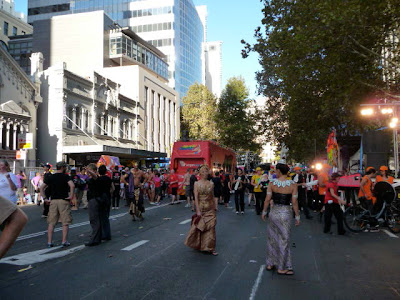
Up close, you can tell that what look like huge, upward-pointing needles are actually branches that themselves contain hundreds of small needles:

From a distance, they stand out like sentinels:

They must have looked somewhat like that to Captain Cook, when he discovered Norfolk Island and excitedly reported to London that he had found a much-needed source of masts for ships. Alas, those huge straight trunks turned out to be as weak as carrots and the trees thus had no economic value.
Later, they were exported around the region for landscaping, but you can't plant them in the eastern United States, as they'll snap under a wintertime load of snow and ice.
















































